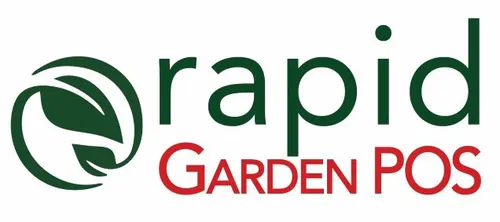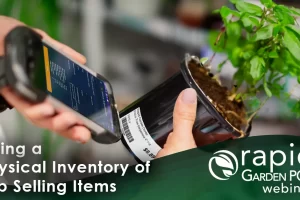Planting the First Seed: Starting Your Garden Business Journey
Over the years, we’ve sat across from garden center owners at their busiest moments and walked nursery yards just as spring orders arrived. We’ve seen firsthand what it takes to move from the spark of an idea to the reality of running a thriving garden business. And we know this: the questions at the beginning can feel endless. Do you need land right away, or can you start smaller? Is it worth investing in greenhouses early? What about licenses, insurance, websites, and equipment?
Those questions can feel overwhelming, but we’ve also seen the answers come into focus. Starting a garden business isn’t about having it all figured out on day one: it’s about laying the right foundations and building from there.
Cultivating the Right Skills Before You Open the Gates
One of the clearest patterns we’ve noticed among successful owners is how much time they’ve spent learning the rhythm of the industry before opening their doors. Working a season in a nursery, shadowing suppliers, or even volunteering with a local landscape company gives you a sense of the pace and the problems you’ll eventually face yourself. It’s the difference between guessing and being ready when customers ask which perennials thrive in shade, or how to handle the first truckload of soil arriving on a busy morning.
But knowledge goes beyond plant care. Operations matter just as much: organizing inventory, setting up repeatable processes for staff, and managing the flow of a peak-season Saturday when dozens of customers line up at once. Some of the most valuable skills that new owners invest in early include:
- Horticulture basics like plant care, seasonal timing, and soil management.
- Customer service and community engagement, since reputation builds loyalty.
- Inventory organization and vendor relationships to keep stock moving smoothly.
- Basic accounting and cash flow management to avoid costly surprises.
- Digital know-how, from running a simple website to posting on Instagram or building an email list.
Each of these skills not only prepares you for launch but also builds confidence that you’ll be ready when the first rush of customers arrives.
Mapping A Garden Center Business Plan That Works
When we talk with new garden business owners, one of the first hurdles that comes up is planning. Not the kind of plan that gathers dust in a drawer, but a clear, working outline of what you’ll offer, who you’ll serve, and how you’ll sustain operations through the ups and downs of the seasons. The most successful garden centers we’ve partnered with didn’t start with a hundred-page document full of charts: they started with a focused plan that guided their daily decisions.
A thoughtful plan also means being realistic about costs. Opening a garden center with retail space, land, and greenhouses can require a significant investment, anywhere from $20,000 to $80,000 at the start, depending on size and scope. But we’ve also seen businesses grow gradually, beginning with small-scale setups, testing the market, and reinvesting profits into expansion. The common thread isn’t the dollar figure; it’s having a financial framework that sets expectations early and helps avoid surprises.
The strongest plans share a few essentials. They begin with a clear vision and niche, defining whether you’ll be known for native plants, edible gardens, or landscaping services. They follow with market research, identifying who your customers are and what they’re looking for. They outline startup costs (from land and permits to staff and initial inventory) and detail how revenue will flow, whether through retail, wholesale, or seasonal workshops. Finally, they set seasonal milestones: achievable sales goals that keep you on track through spring, summer, fall, and winter.
Finding Your Focus: Why Your Niche Matters
The most common misstep we see from new garden businesses is that they’re trying to offer everything at once (annuals, perennials, trees, houseplants, landscaping services, even floral arrangements). The intent is good: more variety should mean more customers. But in practice, spreading yourself too thin makes it harder to manage inventory, train staff, and build a clear identity in your community.
What consistently works better is focus. Some of the strongest businesses we’ve worked with found their footing by specializing first, whether that meant focusing on native plants, building a reputation around pollinator-friendly gardens, or establishing themselves as the go-to destination for houseplants. Others focused on services, from landscaping design to lawn care, and used that as a foundation to expand later.
Your niche defines what you sell, but it also shapes how customers see you and how you market yourself. It’s the difference between being “the shop with lots of plants” and being “the local expert for edible gardens” or “the team that transforms backyards into pollinator habitats.” And when your niche is clear, your decisions get easier. You know which products to prioritize, which staff expertise to develop, and which promotions resonate with the people you want to reach. Choosing a niche it’s about setting a strong foundation, one that makes growth sustainable and your reputation clear from the very beginning.
Licenses and Legal Basics For A Garden Business
It’s tempting to skip over the paperwork when the excitement of launching a garden business is pulling you toward plants, displays, and customer plans. But the owners who stay successful in this industry are the ones who establish the legal foundation early and avoid headaches later.
At minimum, you’ll want to make sure these boxes are checked before launch:
- A business license and zoning approval for retail or growing.
- A nursery license if you’re selling live plants.
- Pesticide certifications, if you plan to use or sell them.
- Liability insurance to protect both you and your customers.
- A record-keeping system to track renewals, permits, and inspections.
While no one loves red tape, early organization often pays off. Inspectors can become allies, and with the right garden business software, you can store permits, track renewal dates, and log inspections so nothing slips through the cracks.
More Than Marketing: Telling Your Garden Business Story
Customers don’t just buy plants, they buy inspiration. People walk through your doors looking for ideas as much as they’re looking for soil or perennials. The businesses that stand out are the ones that make marketing less about transactions and more about connection.
Storytelling is what makes that connection. Instead of saying, “We have roses on sale,” tell the story of how those roses transform a backyard into a welcoming space, or how a pollinator-friendly garden supports the local ecosystem.
And today, digital channels make that easier to scale. A short Instagram Reel of your fall wreath workshop, an email with “3 Weekend Garden Projects,” or fresh seasonal photos uploaded to your Google Business Profile are all low-cost ways to stay top of mind. The shift is simple: ask not “What do I need to sell today?” but “What do my customers want to create this season?”
Stocking Smarter: Balancing Inventory and Supplier Relationships
One of the fastest ways new garden businesses get into trouble is by overbuying. It’s easy to get carried away when everything looks promising in a catalog, but the reality is that excess stock ties up capital, creates waste, and makes operations harder instead of smoother.
The businesses that thrive learn to align their inventory with both customer demand and supplier reliability. That means using past sales data as a guide, paying attention to seasonal patterns, and being intentional about what gets ordered and when.
A few proven stocking moves we’ve seen successful owners rely on include:
- Ordering smaller, more frequent shipments in peak season.
- Reviewing what sold well last year to guide this year’s orders.
- Creating seasonal bundles (like bulb + soil + fertilizer kits).
- Setting reorder points for bestsellers so you never run out.
- Building strong relationships with a few core suppliers instead of spreading too thin.
Smart stocking isn’t about buying more, it’s about buying right. When you reduce guesswork and strengthen supplier partnerships, you free up resources to focus on what matters most: growing your business season after season.
Managing the Numbers With Confidence
Passion may bring customers in, but numbers keep the doors open. Pricing, cash flow, and invoicing may not feel as rewarding as a greenhouse full of color, but they’re what turn a hobby into a sustainable business.
Many new owners wrestle with pricing in the early months, unsure whether they’re charging too much or too little. The temptation to underprice just to win customers almost always backfires: margins shrink, pressure builds, and growth stalls before it has the chance to begin. A stronger approach is to create a pricing model that reflects not only the cost of plants and supplies but also seasonality and the value of your expertise.
Cash flow is another common stumbling block. Expenses for soil shipments, seasonal staff, fertilizer orders, and advertising arrive quickly, and without a system to track them, money seems to disappear as fast as it comes in. That’s why one of the smartest moves you can make early is to separate business and personal accounts, track cash flow weekly, and set aside funds for taxes and unexpected costs.
For many owners, the solution lies in finding ways to simplify the financial side of the business. Whether that’s using bookkeeping support, basic accounting apps, or a dedicated garden business software, the goal is the same: to reduce the late-night scramble of spreadsheets and gain a clearer picture of profitability. When you have that clarity, you can make confident decisions about pricing, expenses, and growth.
Building Loyalty and Community
In the green industry, lasting growth isn’t about expanding as fast as possible; it’s about cultivating relationships with the same patience and care you’d give to a garden bed. The businesses that thrive season after season are the ones that nurture loyalty.
Repeat customers are the real backbone of stability. Families who return every spring for annuals, or landscapers who depend on you for bulk orders, provide a foundation no amount of new foot traffic can replace. That stability doesn’t happen by accident; it’s built through small, consistent gestures: a loyalty program that rewards return visits, a seasonal workshop that brings neighbors together, or even a simple follow-up call to check how a project turned out.
More than tactics, though, loyalty is about mindset. The strongest garden centers treat customers as partners in their own projects. They anticipate needs before they’re voiced, celebrate returning faces, and offer inspiration alongside every purchase. When you approach your business this way, you’re not just selling plants, you’re growing a community that will sustain you for years to come.
From Seed to System: Growing Into the Garden Business
Starting a garden business is a lot like tending the plants you’ll eventually sell: it takes patience, preparation, and the willingness to adjust as you go. The challenges are real, but they don’t have to overwhelm you. With reliable suppliers, loyal customers, and the right tools to simplify operations, you can focus on what matters most: serving your community and building a business that lasts.
That’s where we’ve seen Rapid Garden POS make the difference. Our system helps garden centers, nurseries, and landscaping companies take the guesswork out of operations — from stocking smarter to running seasonal promotions and tracking customer loyalty. It brings you the clarity that lets you focus on growing.
Ready to see it in action? Discover how Rapid Garden POS can help you stock smarter, sell more seasonal bundles, and track which promotions work best. Book your free demo here.
Because just like any garden, the most successful businesses grow one season, one step, and one decision at a time.




